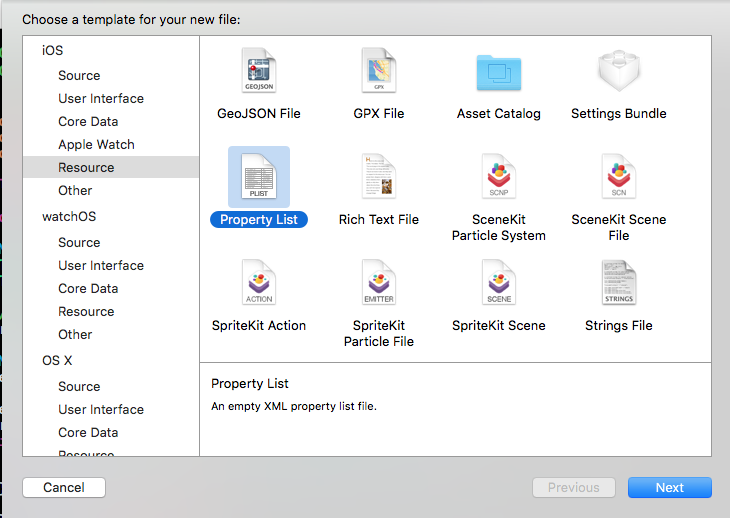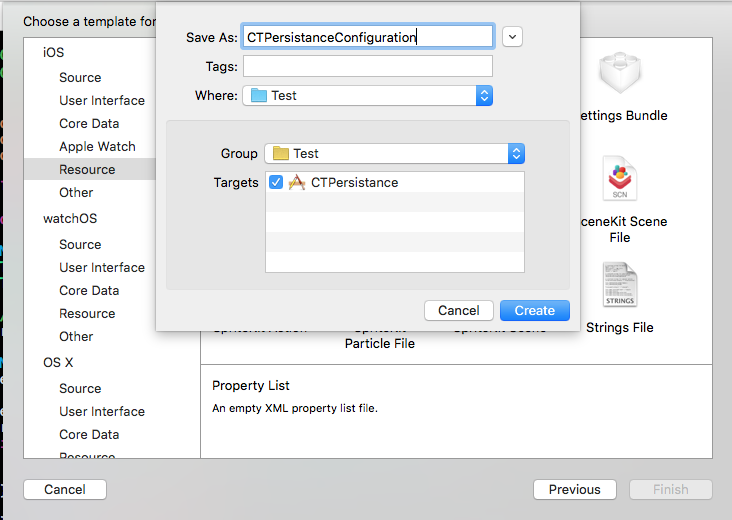Persistence, Persistance, lol.
#CTPersistance
CTPersistance can be used as a Model Layer in iOS App development, maybe can used for MacOSX develop, but I'm not tested yet. See CTPersistance Reference for more infomation.
#Install (Cocoapods)
pod 'CTPersistance'
#Features
- Insert, Delete, Update, Read
- support database migration
- transaction (future)
go to Build Phases and add sqlite3 into your library list.
#Quick Try (Insert, Delete, Update, Read)
@interface TestRecord : CTPersistanceRecord
@property (nonatomic, copy) NSNumber *identifier;
@property (nonatomic, copy) NSString *text;
@end
2. create TestTable which extends from CTPersistanceTable, and confirms to CTPersistanceTableProtocol like this:
#import "CTPersistance.h"
@interface TestTable : CTPersistanceTable <CTPersistanceTableProtocol>
@end
@implementation TestTable
#pragma mark - CTPersistanceTableProtocol
- (NSString *)databaseName
{
return @"TestDataBase.sqlite";
}
- (NSString *)tableName
{
return @"TestTable";
}
- (NSDictionary *)columnInfo
{
return @{
@"identifier":@"INTEGER PRIMARY KEY AUTOINCREMENT",
@"text":@"TEXT"
};
}
- (Class)recordClass
{
return [TestRecord class];
}
- (NSString *)primaryKeyName
{
return @"identifier";
}
@end
#import "ViewController.h"
#import "TestTable.h"
#import "TestRecord.h"
@interface ViewController ()
@end
@implementation ViewController
- (void)viewDidLoad {
[super viewDidLoad];
/* insert */
NSError *error = nil;
TestTable *table = [[TestTable alloc] init];
TestRecord *record = [[TestRecord alloc] init];
record.text = @"hello, world!";
[table insertRecord:record error:&error];
NSLog(@"%@", record.identifier); // 1
/* read */
record = (TestRecord *)[table findLatestRecordWithError:&error];
NSLog(@"%@", record.text); // hello, world!
/* update */
record = (TestRecord *)[table findWithPrimaryKey:@(1) error:&error];
record.text = @"hello, universe!";
[table updateRecord:record error:&error];
/* delete */
[table deleteRecord:record error:&error];
}
@end
#Quick Try (Migration)
#import <Foundation/Foundation.h>
#import "CTPersistanceMigrator.h"
@interface MigrationStep1_0 : NSObject <CTPersistanceMigrationStep>
@end
NOTICE:
you can only use initWithQueryCommand: to create a table in migration step object
and DO NOT use initWithQueryCommand: to create table outside the migration step object
in other situation, init is the only method for you to create a table.
#import "MigrationStep1_0.h"
#import "TestTable.h"
@implementation MigrationStep1_0
- (void)goUpWithQueryCommand:(CTPersistanceQueryCommand *)queryCommand error:(NSError *__autoreleasing *)error
{
TestTable *table = [[TestTable alloc] initWithQueryCommand:queryCommand];
[[queryCommand addColumn:@"migration1_0" columnInfo:@"TEXT" tableName:table.tableName] executeWithError:error];
if (*error) {
return;
}
NSDictionary *keyvalueList = @{@"migration1_0":@"this is migration"};
NSString *whereCondition = @":primaryKey > 0";
NSString *primaryKey = [table primaryKeyName];
NSDictionary *whereConditionParams = NSDictionaryOfVariableBindings(primaryKey);
[table updateKeyValueList:keyvalueList whereCondition:whereCondition whereConditionParams:whereConditionParams error:error];
}
- (void)goDownWithQueryCommand:(CTPersistanceQueryCommand *)queryCommand error:(NSError *__autoreleasing *)error
{
// do nothing
}
@end
3. create the migrator which extends from CTPersistanceMigrator and confirm to <CTPersistanceMigratorProtocol>
#import "CTPersistanceMigrator.h"
@interface TestMigrator : CTPersistanceMigrator <CTPersistanceMigratorProtocol>
@end
import the step object you just created, and put them into migrationStepDictionary, migrationVersionList is the order to migrate steps, the version list must start with kCTPersistanceInitVersion.
#import "TestMigrator.h"
#import "CTPersistanceConfiguration.h"
#import "MigrationStep1_0.h"
#import "MigrationStep2_0.h"
@implementation TestMigrator
#pragma mark - CTPersistanceMigratorProtocol
- (NSDictionary *)migrationStepDictionary
{
return @{
@"1.0":[MigrationStep1_0 class],
@"2.0":[MigrationStep2_0 class]
};
}
- (NSArray *)migrationVersionList
{
return @[kCTPersistanceInitVersion, @"1.0", @"2.0"];
}
the key is the name of the database which you want to migrate. the value is the name of the class name of the migrator.
CTPersistance will try to match the key with the name of database to decide which migrator to use, and you can use Regular Express Patten for the key.
you can try migration now!


